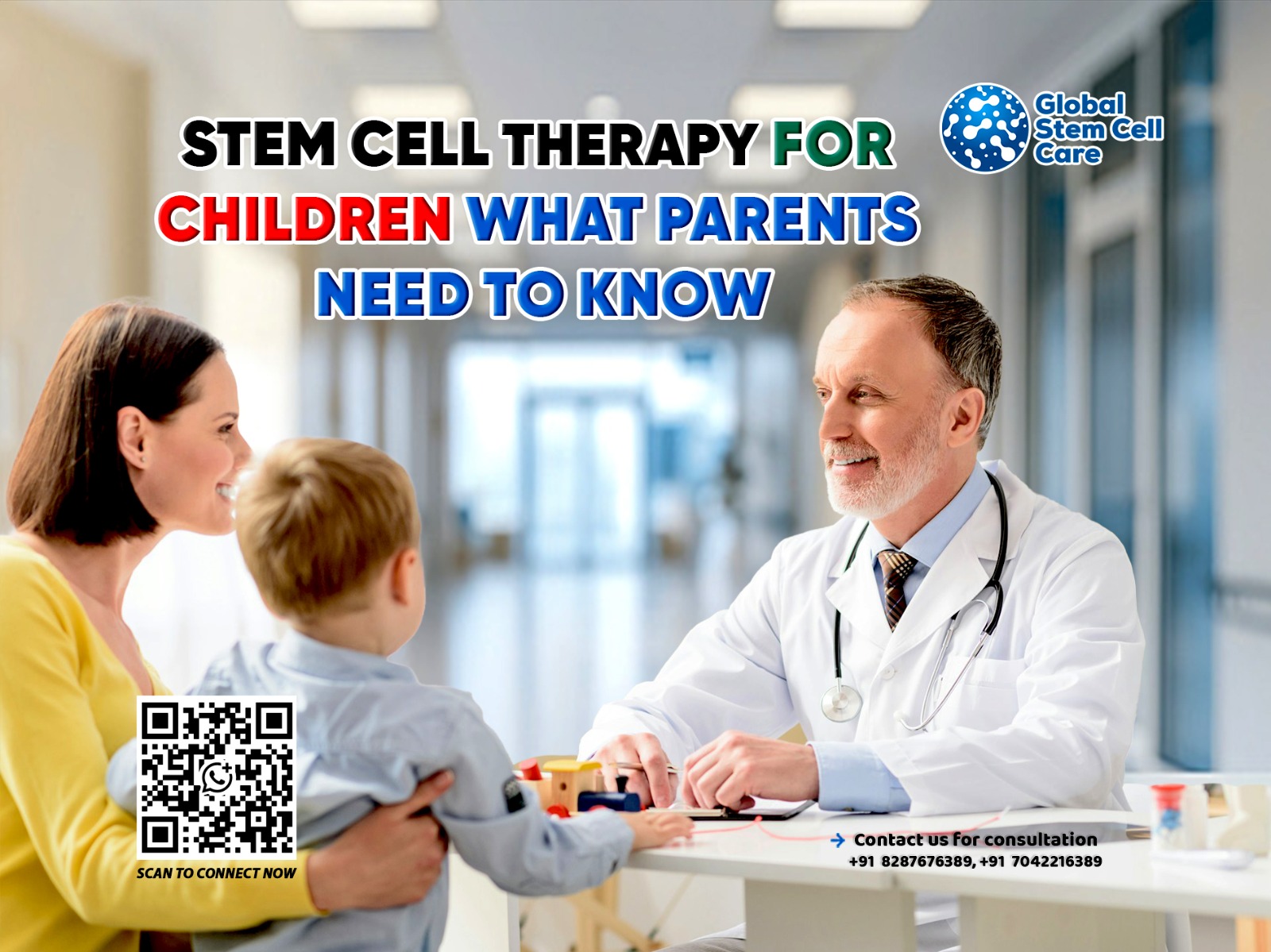Table of Contents
Summary: Stem cell therapy is a specialized medical therapy that employs the body’s own repair cells to fix or replace damaged tissues. For kids with some illnesses, it can bring new hope where conventional treatments cannot go further. This blog discusses what stem cell therapy is, how it can potentially help children, its safety, and what parents should keep in mind.
As a parent, nothing may be more important than the health and happiness of your children. If your child is seriously sick, then you want to provide your child with the very best treatment available, according to the science of medicine and health treatment. While traditional medicine may provide success for many children, other parents find out that stem cell therapy is another option for their child, who is suffering from degenerative conditions.
If you are wondering if this stem cell treatment is safe, effective, or appropriate for children, let’s explore together to understand why stem cell therapy is considered a potential alternative for many conditions.
What Is Stem Cell Therapy?
Stem cell therapy uses specialized cells in the body known as stem cells. Stem cells can differentiate into a variety of cells – like blood cells, brain cells, or muscle cells. They are used by doctors to:
- Replace injured or weak cells.
- Regenerate tissue and organs.
- Help promote the body’s natural healing.
In children, stem cells are typically obtained from umbilical cord blood, bone marrow, or, in rare cases, fat tissue.
Conditions Where Stem Cell Therapy May Help Children
Stem Cell treatment is still being researched and studied, but doctors are exploring its use in conditions like:
Blood Disorders
- Children with blood disorders such as leukemia may undergo stem cell therapy to restore their healthy blood and bone marrow.
Immunodeficiency Disorders
- There are a small number of children who are born with an immunodeficiency – their immune systems are simply not functioning.
- Stem cell therapy is able to create even larger immune cells that can fight infection.
Neurological Disorders
- Stem cells are being studied as a treatment for neurological disorders such as cerebral palsy and autism.
- The preliminary research findings show that stem cells are able to repair parts of the brain and improve learning, behavior, and motor skills.
Bone and Joint Disease
- Inherited bone disease or traumatic injuries in children may be treated with stem cell therapy because of the ability of stem cells to repair bone, cartilage, and connective tissue.
Research Continues
- Not all of these conditions or treatments are evidence-based, and the outcome for each child will be its own unique process.
- The parents will always have to turn back to the specialist team and work at a practical level.
Is Stem Cell Therapy Safe for Children?
Most parents are concerned about safety and rightly so. Here are some key points to remember:
- Certified Clinics Matter: Stem cell treatment is safe when done in reputable, certified medical facilities by skilled professionals.
- Minor Side Effects: Most kids can only expect brief fatigue, mild tenderness, or light discomfort following treatment, which often resolves itself in short order.
- Eligibility Screening: Not all children are good candidates for stem cell treatment. Physicians thoroughly examine the child’s health status, medical history, and overall requirements before prescribing it.
- Realistic Expectations: Research is ongoing. Parents need to appreciate that results can be different and improvements may be gradual instead of sudden.
What Parents Should Keep in Mind?
If you are planning stem cell treatment for your child, here are some vital facts:
Do your Research: Find out how the procedure is done and if it can be carried out for your child’s ailment.
Consult with Experts: Always approach expert doctors or stem cell experts, such as Global Stem Cell Care, a renowned consultancy that explains the treatment to the parents in simple terms.
Verify Clinic Credentials: Ensure that the treatment center is accredited and up to international standards.
Control Expectations: Stem cell therapy is amazing, but not always a miracle cure.
Emotional Support is Essential: In addition to medical treatment, children need to be provided with love, attention, and encouragement in order to heal.
Putting It All Together
Stem cell therapy is promising for children with difficult medical conditions, but parents must approach it with the right information and counseling. Having a licensed facility, knowing potential side effects, and having realistic expectations are all important in making the most informed choice for your child’s treatment.
If you are considering seeking this treatment for your child, get a professional advisor, such as Global Stem Cell Care, which offers trusted consultancy and advisory services to parents looking to opt for stem cell therapy in India. They can guide you through whether or not this therapy can improve your child’s particular condition.
Frequently Asked Questions (FAQs)
Q1. Is the Treatment Painful for Children?
Ans. Most of the procedures are painless and only mildly uncomfortable, such as a blood test or shot.
Q2. How Do Physicians Harvest Stem Cells in Children?
Ans. Stem cells may be obtained from bone marrow, umbilical cord blood, or occasionally fat tissue.
Q3. How Long Before Results Can Be Seen?
Ans. This varies according to the child’s condition—some will improve in weeks, while others might take months.
Q4. Where Do Indian Parents Find Reliable Advice?
Ans. Parents may contact Global Stem Cell Care, which counsels families with precise information, safe practices, and child-centered care.
